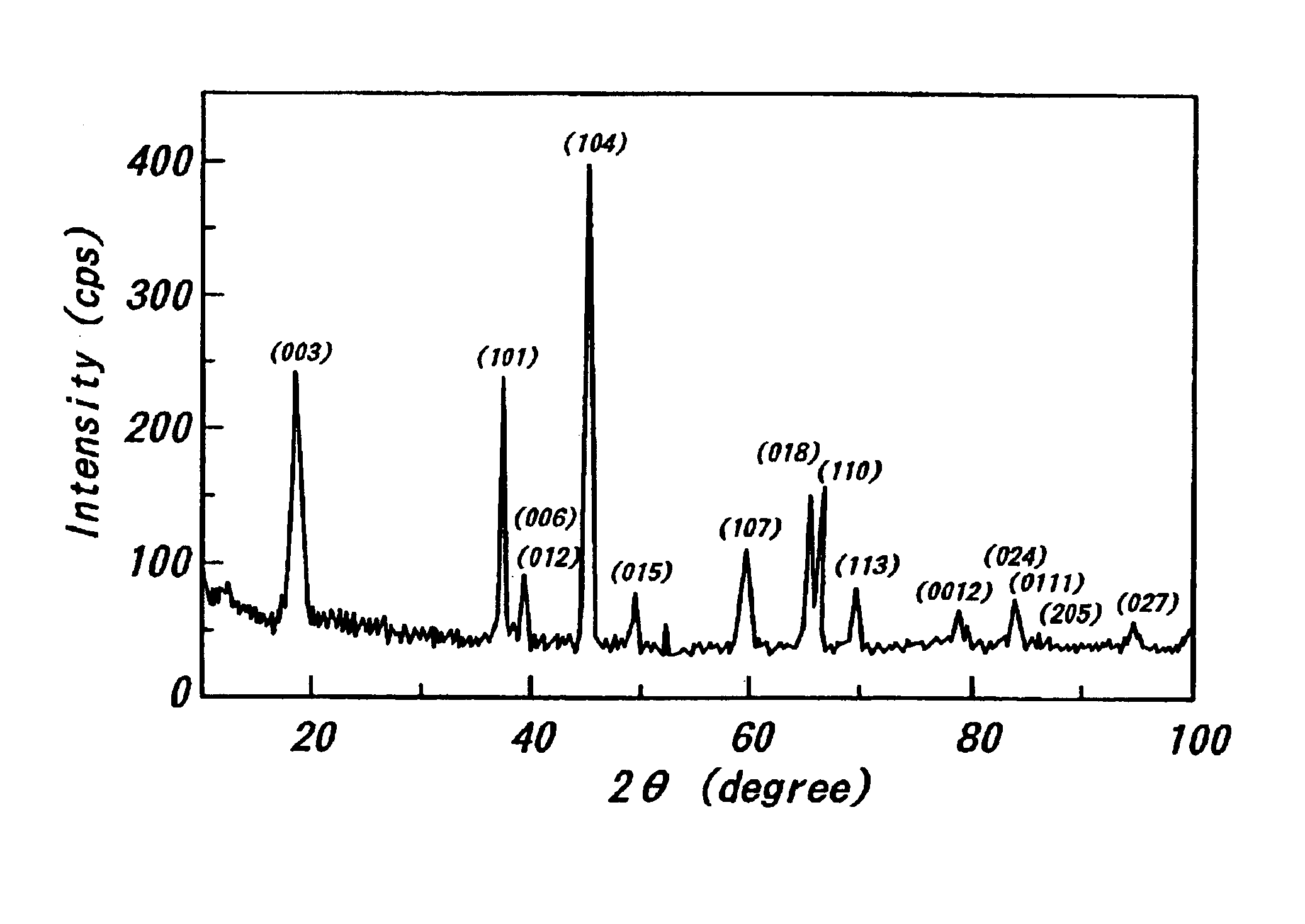Method for forming a thin film
a thin film and film technology, applied in the field of thin film forming, can solve the problems of large cost, complicated operation in use, and high energy condition, and achieve the effect of easy oxidation and short tim
- Summary
- Abstract
- Description
- Claims
- Application Information
AI Technical Summary
Benefits of technology
Problems solved by technology
Method used
Image
Examples
Embodiment Construction
This invention will be concretely described with reference to the following examples.
First of all, a cobalt electrode as the anode electrode and a platinum electrode as the cathode electrode were set in a flow-type reactor.
Then, a reactive solution with an amount of 250 mL was made of distilled water and LiOH.multidot.H.sub.2 O (4M) melted in the distilled water. The re-active solution was put in the flow-type reactor, and then, held at 150.degree. C. and flown in between the cobalt electrode and the platinum electrode at a flow rate of 5 mL / minute.
Then, a given voltage was applied between the electrodes so that a current density of 1 mA / cm.sup.3 was flown therebetween, and hydrogen peroxide (H.sub.2 O.sub.2) was dropped off into the reactive solution at a rate of 1 mL / minute.
Three hours later, the cobalt electrode was taken out of the flow-type reactor, and the surface of the cobalt electrode was analyzed by X-ray diffraction. The thus obtained X-ray diffraction pattern was shown i...
PUM
| Property | Measurement | Unit |
|---|---|---|
| flow rate | aaaaa | aaaaa |
| voltage | aaaaa | aaaaa |
| energy | aaaaa | aaaaa |
Abstract
Description
Claims
Application Information
 Login to view more
Login to view more - R&D Engineer
- R&D Manager
- IP Professional
- Industry Leading Data Capabilities
- Powerful AI technology
- Patent DNA Extraction
Browse by: Latest US Patents, China's latest patents, Technical Efficacy Thesaurus, Application Domain, Technology Topic.
© 2024 PatSnap. All rights reserved.Legal|Privacy policy|Modern Slavery Act Transparency Statement|Sitemap


